Interview: Inside San San, Artists Jonah Freeman & Justin Lowe’s Bizarro Parallel Universe
By Keshav AnandWest End gallery Marlborough hosts Colony Sound, a multi-room immersive installation by NYC-based collaborative duo Jonah Freeman and Justin Lowe that takes over both floors of the London gallery until 19 October 2019. Upon entering the first gallery space, which has so convincingly been transformed into what appears to be a mobile phone shop that the visitor behind enquires if she’s come to the right address, there is an instant sense of having been transported somewhere far from Mayfair. Since 2007, Freeman and Lowe have been collaboratively drawing on a series of historical and fictional narratives to create large-scale, labyrinthine architectural installations. Their explorations of architecture as immersive sculpture are realised by reimagining dystopian visions, psychotic episodes, and the workings of drug-related subcultures.
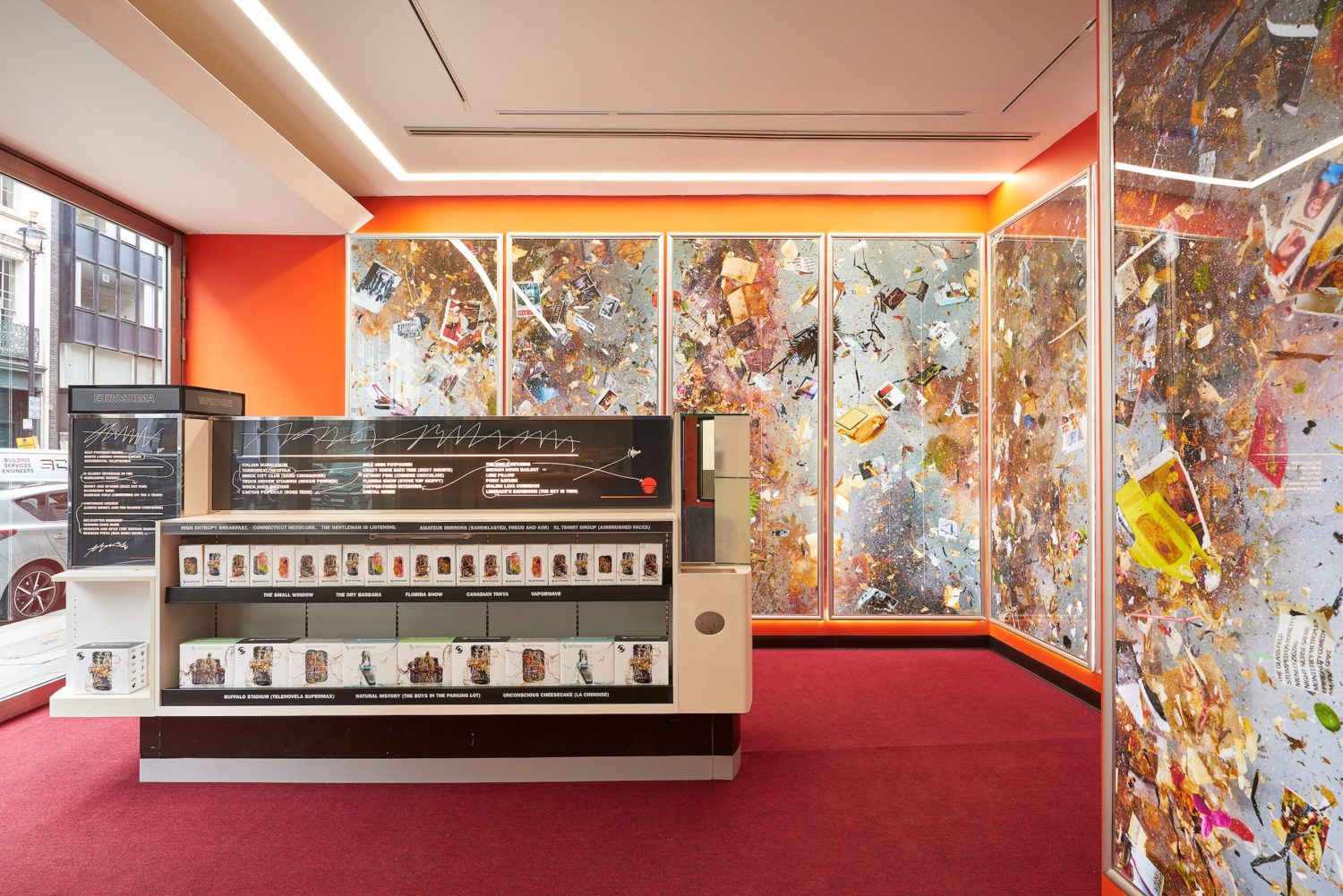
A complex and unreservedly imaginative narrative lays the foundations for this new show. Colony Sound represents the latest chapter in the artists’ cinematic San San Universe, a fictional hybrid metropolis fusing San Diego and San Francisco. This episode is focused on a set of relationships surrounding the evolution of an obscure 20th century communication system known colloquially as The Smile. Their new presentation marks Freeman and Lowe’s UK debut – a series of eleven rooms ranging from a telecommunications retail outlet at the entry, to a half-incinerated recording studio replete with wax cast equipment; a copper room used to shield occupants from electromagnetic waves and a shopping arcade-turned-youth-hangout constructed of homemade ceramics.
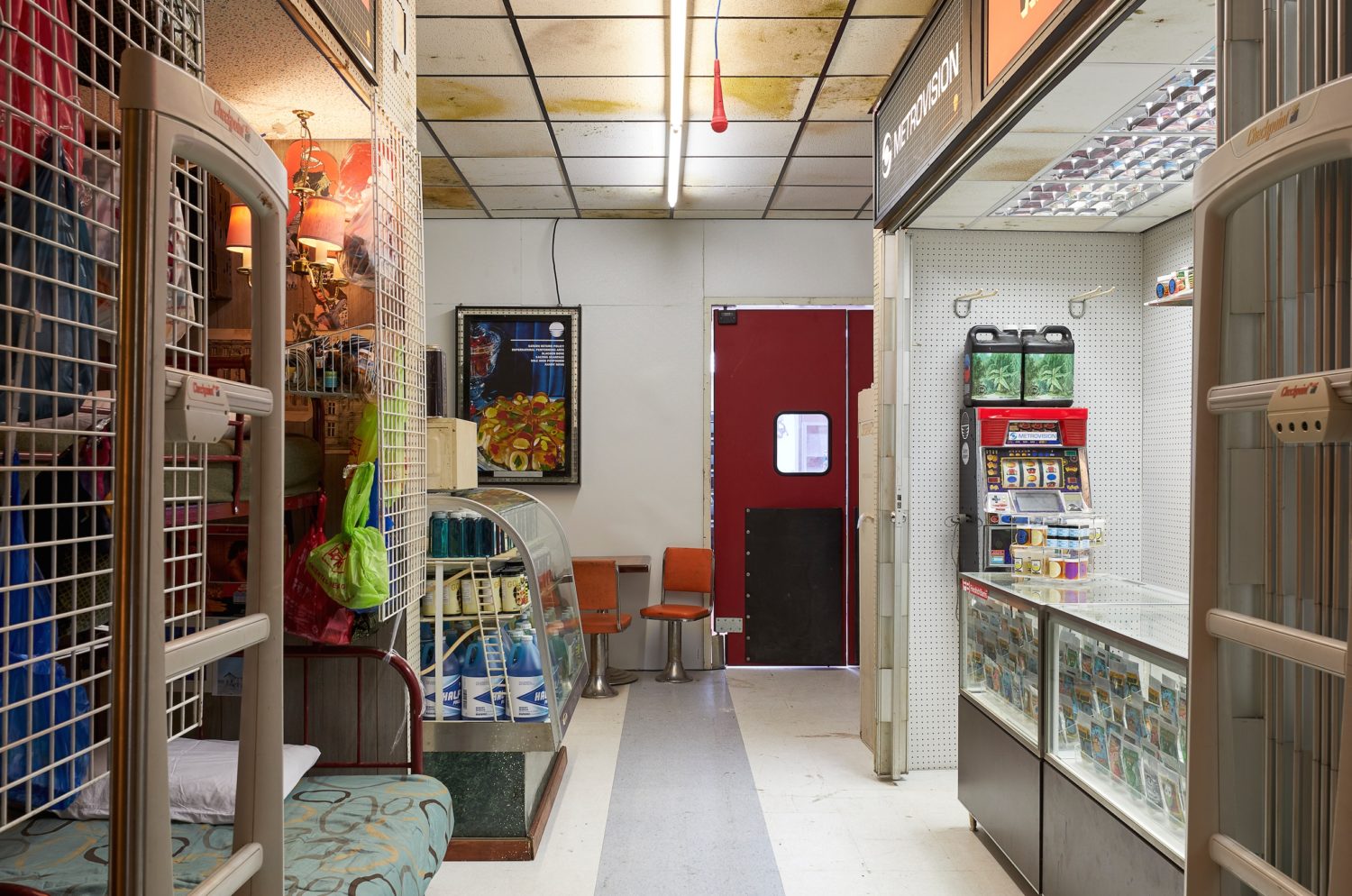
Within the meticulously created environments are multiple series of what feel recognisable as art objects, including a curious group of multi-coloured resin cacti and mineral amalgamations, sitting atop a steel work counter as well as bursting out of filing cabinets. Elsewhere, quotidian items from photocopiers to cleaning product bottles appear rendered in solid black and white rice. Never a boring moment, moving through each of Freeman and Lowe’s dramatic chambers feels like something between uncovering a secret laboratory and undertaking a bizarre tour at Universal Studios. To learn more about Freeman and Lowe, and their new body of work at Marlborough, Something Curated spoke with the artists.
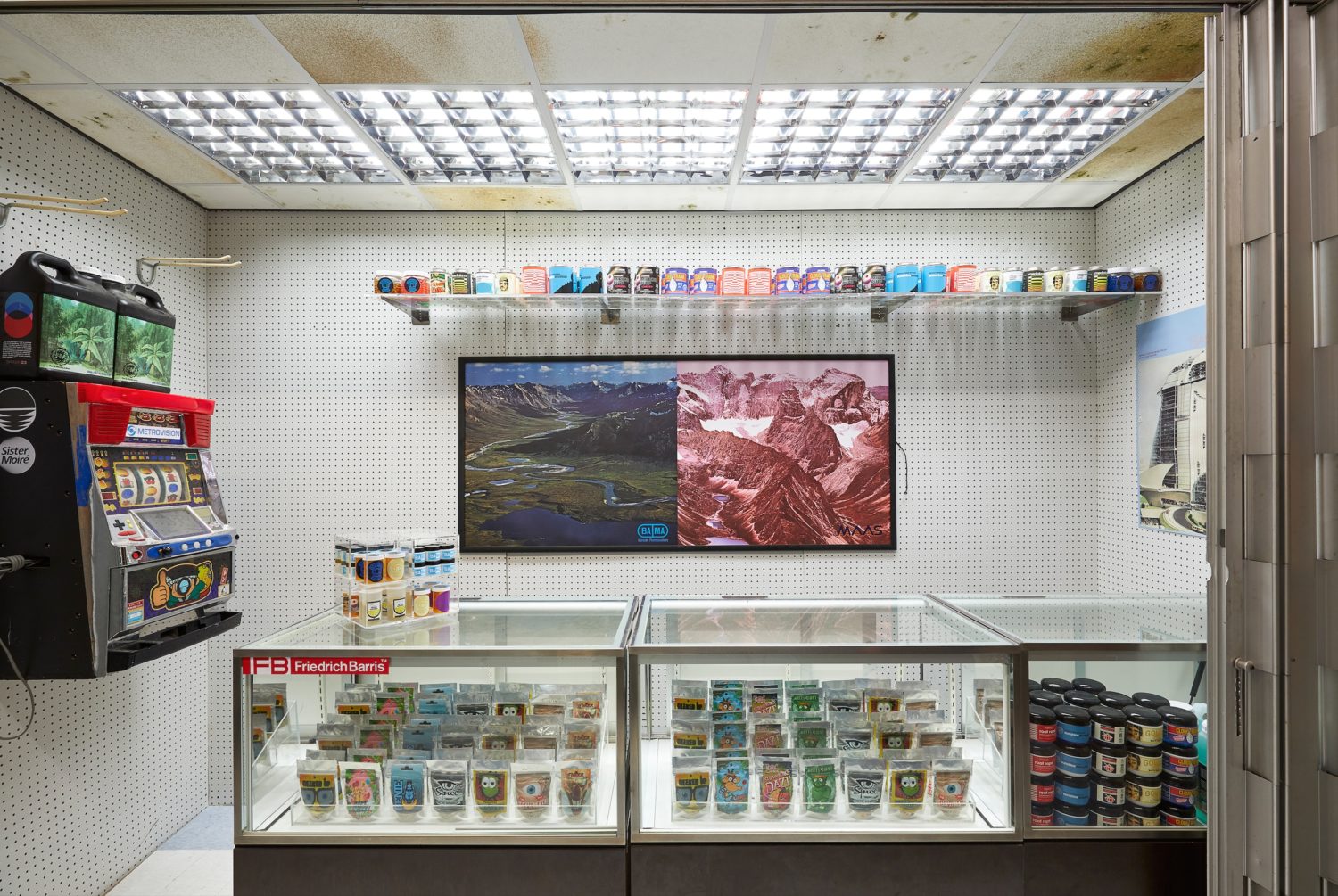
Something Curated: Can you tell us a little about your respective backgrounds and how you entered this field?
Jonah Freeman: I studied film at university. During that period, I became interested in what could be described as the expanded field of cinema: experimental film, video installation and then subsequently the history of Avant Garde art practice. I was very drawn to the way film and media became the subject matter of art, starting with pop and moving through the Pictures Generation. Simultaneously the way certain minimalist and post-minimalist artists were using space as a medium seemed also very exciting. In a way these different strategies of space, media and narrative collided into the work we are currently making. This became a much more appealing vocational path than being a commercial movie worker, which I was technically being trained to become.
Justin Lowe: Sculpture was my major in grad school. But the sculptures almost always became environments that you could move through. I made a piece that was a bodega that led into an ice cream truck. The work always had some element related to counterculture. I made a piece based on Neil Young’s On The Beach for Greater NY at MoMA PS1.
JF: In many ways the collaborative work is just a more diverse and expansive version of the work we were making independently.
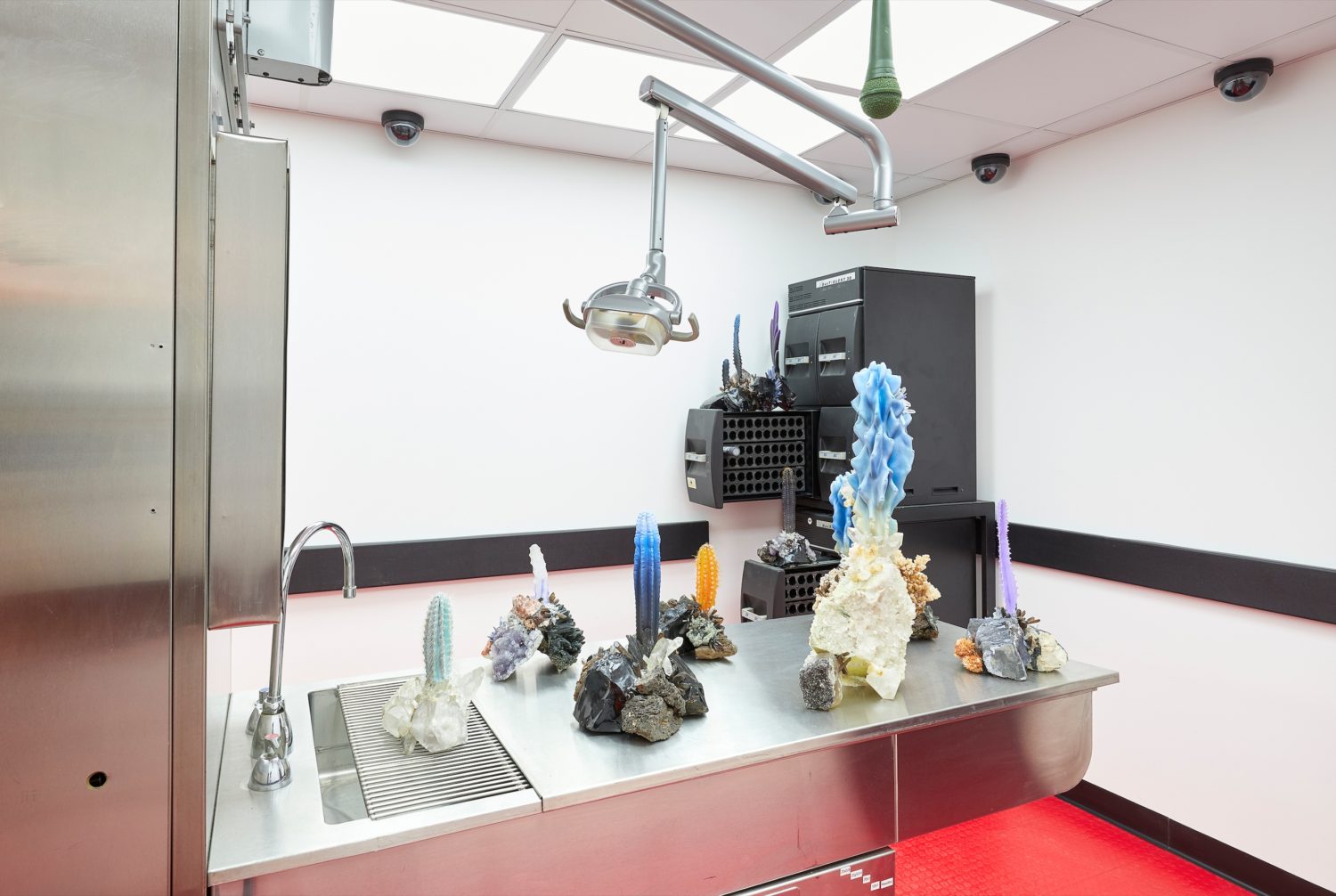
SC: How would you describe your collaborative dynamic?
JF: The fundamental way we collaborate is discussion. There are so many mediums at play in the architectural installations that a huge part of the process is scheming, thinking and rethinking the big picture of the piece. That mainly happens through discussing ideas ad nauseam. As production starts labour gets divided in all kinds of ways. I hope in the future that I don’t have to spend as much time staring at an excel spreadsheet trying to figure out how we can squeeze out the piece in our heads with the money allotted which is invariably never enough.
JL: We both had come from an interdisciplinary art heavy high school so this weaving together of historical narratives twisted with sci-fi genre mash up was part of our training, so there was a shared kind of shorthand language from the very start.
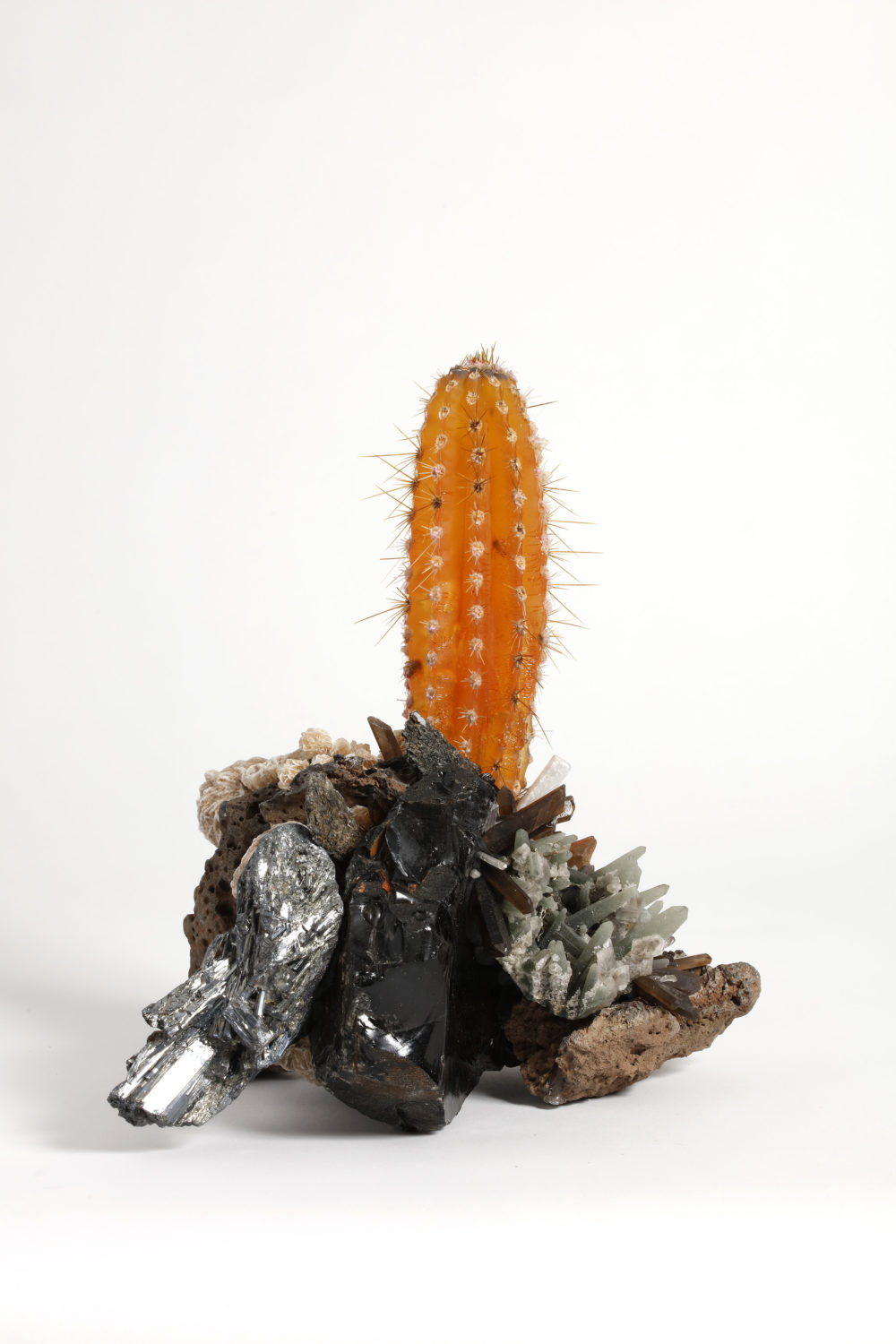
SC: Could you introduce us to the new body of work you are exhibiting at Marlborough?
JF: This is the second chapter in a new body of work that takes on a set of relationships surrounding an underground telecommunication network. The first chapter, A Cell In The Smile, was built as a permanent piece in an underground bunker on the outskirts of Cleveland, Ohio. The bunker, which was constructed from scratch, is cantered around a kind of scientific innovation that emerged from Cold War paranoia. This was happening all over the US but quite prominently in California with Aerospace and Computer technology which relates directly to the world of San San. Colony Sound, as the second chapter, is concerned with how the paranoid innovations are adopted by a counterculture for alternative uses that in many cases contradict the original intentions. This is, of course, a through line in our work that goes back to our first piece Hello Meth Lab in The Sun; the dynamic between mainstream industrial society, a counterculture that emerges in opposition and the weird, atomized hybrid that seems to be our current post-industrial state.
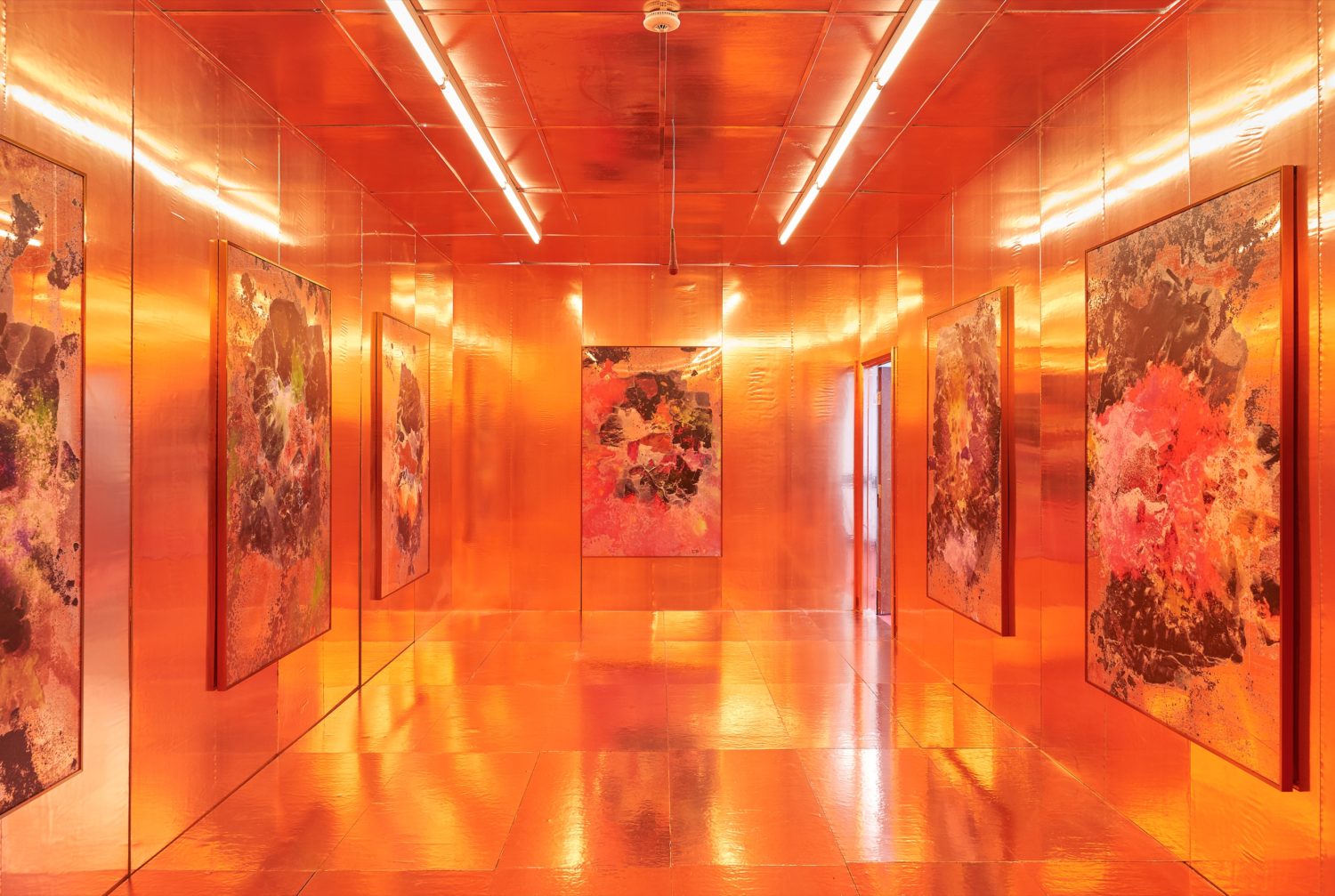
SC: Tell us more about the fictional landscape of San San.
JF: San San is a parallel California that imagines a scenario where the region from San Diego to San Francisco has merged into a single megalopolis. This is an idea that originated from Hermann Kahn and Anthony Weiner in their 1967 book The Year 2000. They worked in the hottest period of the Cold War trying to game out scenarios for the US government regarding all kinds of awful possibilities such as nuclear war and so on. This is one scenario that has yet to come to fruition. But nevertheless, seemed like a ripe foundation for us to explore a wide range of ideas. We have now made 3 films and 8 architectural installations that take place within the San San universe and each piece hits a different part of the history of the city whether it is the habitats of youth gangs, a bunker lab for biological communication, a counterculture magazine or the home of a rouge psychotherapist. It draws from so called real historical narratives that seem germane to the undercurrents of the second half of the 20th century and how they have defined the world of the first part of 21st century.
JL: California, along with being the site of a lot of technological innovation, was arguably the centre of 20th century counterculture. San San as a bizarro California is the perfect foil for a new look at an already well trafficked period in recent history.
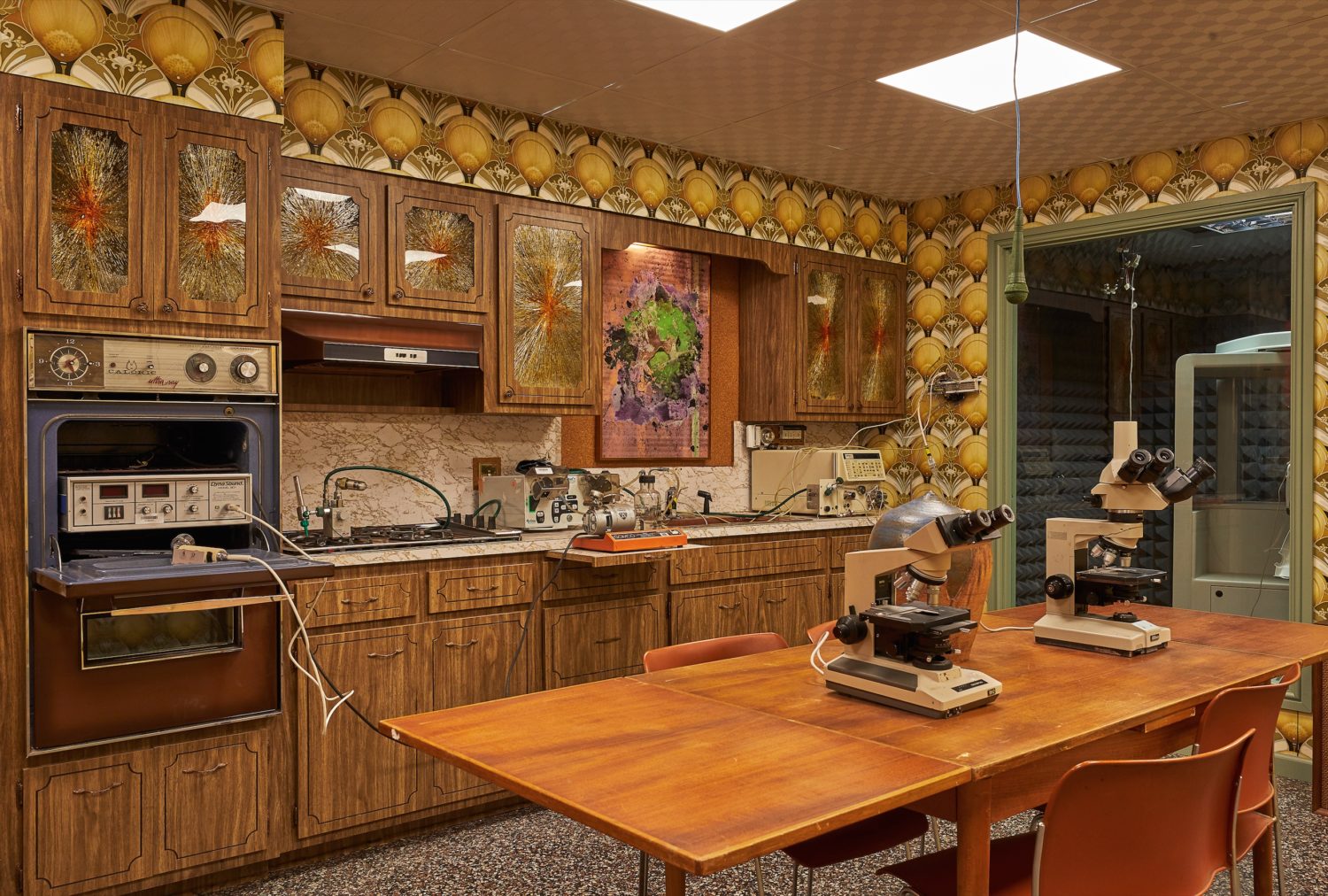
SC: What interests you in working with rice as a sculptural medium?
JL: These works started off with the intention of making macrobiotic sculptures. The health food store was one of the more humorous blossoms of the counterculture and the bulk section seemed ripe with potential. We never got around to the granola totem pole because we got distracted with Artichoke Underground where there was a version of this late-night vegan taxi stand diner in the east village called Punjabi. We were wondering what to put in the deli case and it became a quick and easy decision to make sculptures with rice and it has spun out from there. Black rice works the best and it looks like caviar in the end which seems like a kind of nod to Jason Rhoades Pea Roe Foam. The Xerox machine and the computer were obvious moves for the abandoned office.
JF: It also seemed directly in line with this idea of the biological-technological hybrid that is running throughout Colony Sound. There is an absurd humour to a lot of the science fiction narratives at play in the world of San San and a Xerox machine constructed of rice seemed to be a perfect articulation of that attitude.
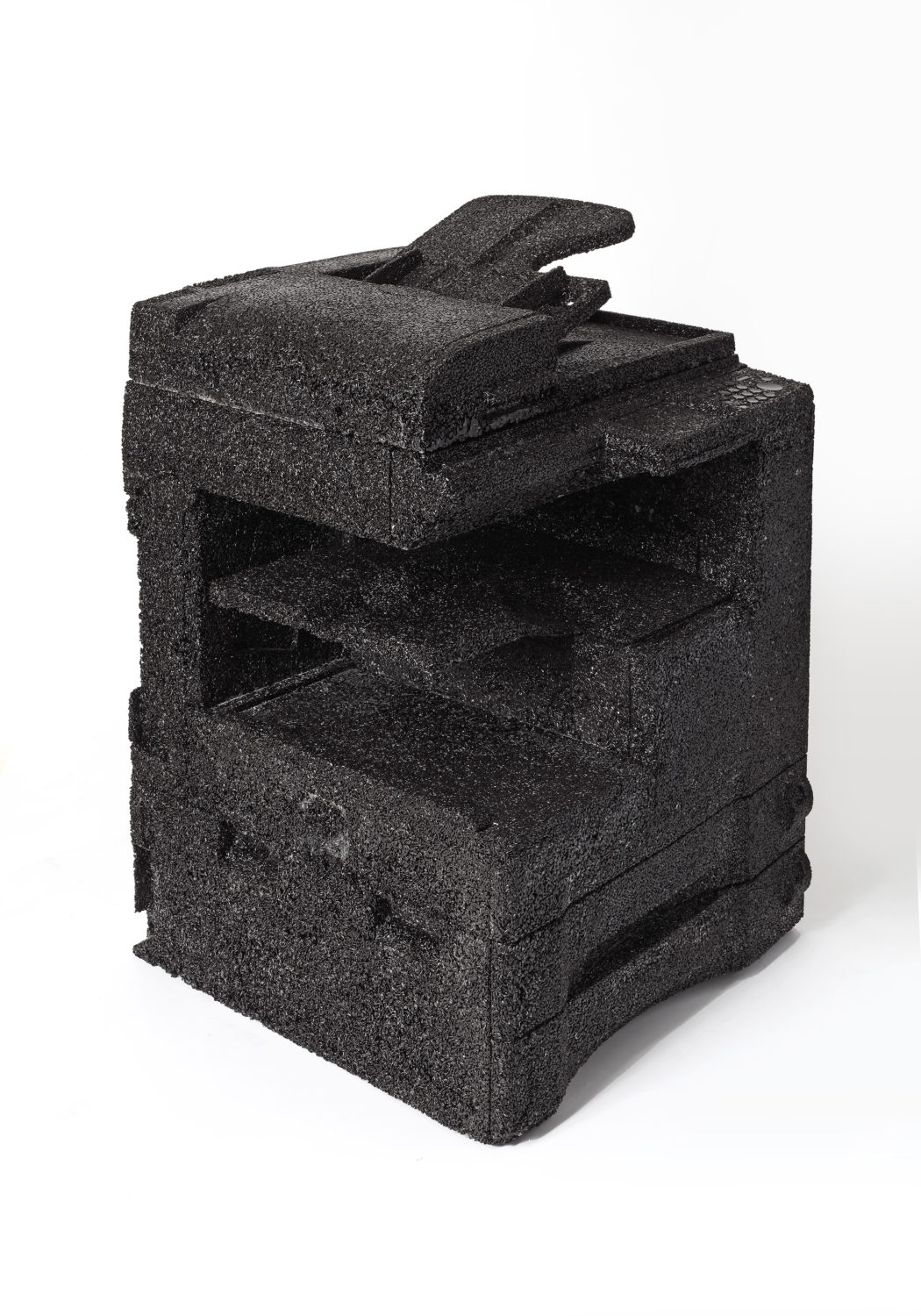
SC: What are you currently reading?
JF: Today I was reading a chapter from Ian Svenonius’s Censorship Now on ‘The Historic Role of Sugar in The Empire State Building’. Yesterday I was reading Charlie Kaufman’s unproduced script for Philip K. Dick’s A Scanner Darkly. I jump around too much. Like a lot of people, I get pulled in by the news feed several times a day. It’s been a long time since I read one book straight through with no interruption.
JL: Erik Davis’s High Weirdness: Drugs, Esoterica, and Visionary Experience in the 70’s. It is a close, multi-disciplinary read of Philip K. Dick, Terence Mckenna and Robert Anton Wilson.
Jonah Freeman & Justin Lowe, Colony Sound at Marlborough | Open until 19 October 2019
Words by Keshav Anand | Feature image: Freeman & Lowe. Colony Sound. Marlborough, London. Installation View. Luke Walker.